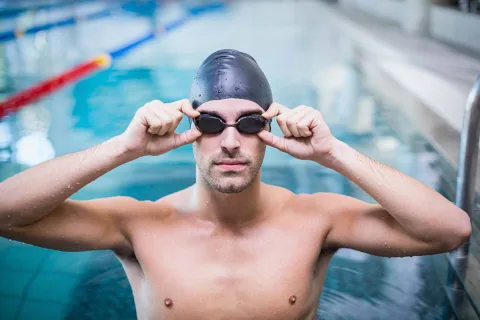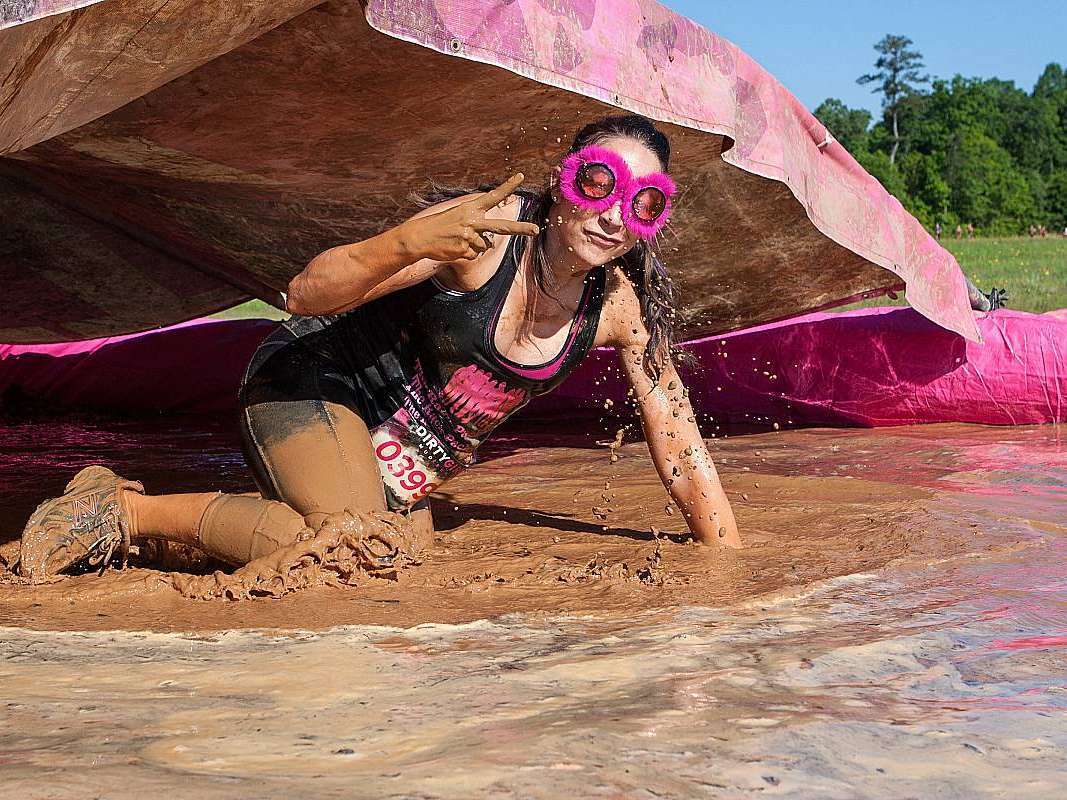 Yesterday I did a Sprint triathlon, which is typically 0.5 mile swim, 12.4 miles bike, and 3.1 miles run.
Yesterday I did a Sprint triathlon, which is typically 0.5 mile swim, 12.4 miles bike, and 3.1 miles run.
Some are shorter, some are longer; the bike ride for my Sprint triathlon yesterday was 16.5 miles.
The first triathlon many newcomers do (which I suggest) is the Sprint triathlon, and yesterday I tried to see it all through the eyes of a beginner. Here are some suggestions that I hope will make your first triathlon race a great experience.
What Is A Sprint Triathlon?
As a way of breaking into the sport of triathlon, consider doing a Sprint triathlon as your first one, and perhaps find one that does the swim in a pool.
For the most part, the swimming portion of triathlons happens in open water. Sprint triathlons are the only exception, and so take advantage of it as a newcomer. There will be plenty of opportunity to do open water triathlons in the future.
Even if you are in good physical condition, don’t let the word “Sprint” mislead you.
A Sprint triathlon does have shorter distances compared to other triathlons, but they are higher in intensity, hence the name Sprint. The experienced triathlete is often looking to do a Sprint triathlon as fast as he or she is capable, which means “katy bar the door” in all 3 stages.
So, please realize that a “Sprint” triathlon doesn’t mean an “easy” triathlon. You still must be prepared physically and mentally.
How Do You Know Your Starting Position?
If it’s a pool swim, each participant will be given a number based on your estimated swim time, which you must calculate and put on your registration form. The easiest way to determine this is go to a pool and time yourself on the distance of your race.
Yesterday, there were 450 people in the triathlon, and I was number 71 because of my estimated swim time. The #1person had the fastest estimated swim time, the #450 person had the lowest estimated swim time.
When the race starts, everyone lines up according to number and begins their swim — one at a time in 3-4 second intervals. In other words, there will be someone 3 to 4 seconds ahead of you and behind you.
What Is On-Site Registration Like?
If at all possible (especially for your first triathlon), pick up your triathlon packet the night before the race, as opposed to the day of.
Normally, the scheduled pick-up time on the night before is more geared to the newcomer and involves:
- a detailed explanation of the race
- a walk-thru of the course
- a review of basic USAT triathlon rules
- all the logistics of race day
It gives you a chance to familiarize yourself with everything, which takes some stress off for race day.
Race Day Tips
 On race day, arrive about an hour and 15 minutes before race time in order to get marked with your race number, set up your transition area, and do a warm up.
On race day, arrive about an hour and 15 minutes before race time in order to get marked with your race number, set up your transition area, and do a warm up.
Here are a few tips I’ll pass along as a result of things I experienced and saw in yesterday’s race:
1. Eat breakfast about 3 hours before race time.
2. Take a sports gel about 15 minutes before you start your swim.
3. Have water at your transition area so you can take a few gulps before you head out for the bike or run.
4. Have a bottle of sports drink on your bike, and take another gel when there is about 3 miles left on your bike ride.
5. While on the run, take the water at each aid station.
6. Have your swim cap and goggles all adjusted before you enter the water. You don’t want to be fooling around that sort of thing when you are on the clock.
7. Don’t race other competitors. As I said, experienced triathletes who pass you on the swim, bike, or run are not trying to show you up, they are racing the clock. It just so happens that you are there as they pass by. They probably don’t even know you are there because they are focused on their race, not you. Remember, this is your first triathlon, so focus on your race, which is simply to finish (or to finish with a time you have previously determined). Don’t allow other competitors to speed up your pace.
Yes, You Really Can Do It!
Finally, it is quite possible there will be times when, despite all your training and preparation, there will be a voice in your head as you swim, bike, or run that will call into question whether or not you are going to be able to do it.
Here’s how it often evolves.
Something unexpectedly happens, it might even be a small thing but you may already be slightly stressed for your first triathlon and this small thing throws you off somehow. Maybe you swallow some water as someone passes you in the pool, you start struggling for air, your chest tightens up with some panic, and you hear the voice.
Maybe you feel absolutely spent after climbing a hard hill on the bike, or you start feeling a cramp in your stomach during the run. Maybe it’s just a comment you overhear while you’re awaiting your swim start, and it plays with your head.
Maybe you fall over on your bike as you’re trying to run it out of the transition area. (By the way, all of the above things have happened to me.) Just be aware that it’s possible that you may find yourself in moments when that voice will turn against you, and try to convince you that you can’t do it.

What do you do?
First, tell yourself, “Ah, I remember Jim saying this could happen. What I’m experiencing right now is not unique to me; everyone experiences this, and gets through it.”
Secondly, apply a calming strategy. If you become stressed in the water, when you get to the end of the pool just stop at the wall for a moment and collect yourself. You won’t be disqualified. Even in an open water swim, you can swim over to a canoe and hang onto it to calm yourself and you won’t be disqualified.
You can also change your stroke. Even if you only know freestyle, everyone can do a side stroke. The advantage of a side stroke is that it keeps your head out of the water where air is, but it also keeps you moving forward.
During these calming measures, remind yourself that you can do this, and then give it another try. Don’t feel bad if you have to do this more than once.
As Yogi Berra said, “90% of the game is half mental.”
Yeah, I know the math doesn’t add up but his point is true. A big part of triathlons is mental. Look, this is your first one. Typically, everything is more difficult the first time you do it.
The moment you cross the finish line, you could likely go back the next day and do it all over again, and it would seem like a piece of cake. Why? Because all that first time stress would be gone, and you know from experience what’s involved.
You’ll get through it, and become more comfortable over time; it’s just part of it. You can do it!
I’m over 40 years old, but I don’t give up easily. It wasn’t too long ago that I was exploring the idea of doing my first triathlon. If I can do it, you can too! I'm proof that with a little determination and training, you can get a great deal of fulfillment participating in marathons, triathlons… even ultramarathons.




